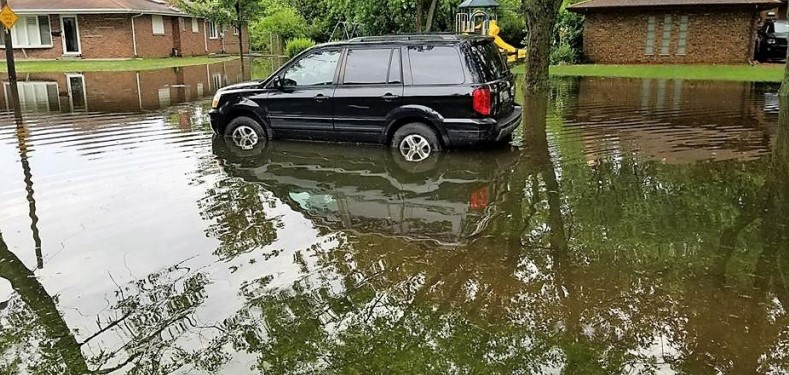For those who live there, the neighborhood of homes just off Wentworth Avenue in Lansing is know as the Flanagin Park subdivision.
But with dozens of homes sitting at one of the lowest spots in the village, Lansing officials often refer to it as the “Flanagin Bowl,” which becomes an apt description during storms.
A flood relief project recently completed by the Metropolitan Water Reclamation District will hopefully drain the bowl, but it is not a total fix and more needs to be done to solve the problem, officials said Tuesday.
“This area has been home to localized flooding for many a year,” village administrator Dan Podgorski said at a ceremony Tuesday.
Speeches and a ribbon cutting marked the completion of the project, construction of which began last year.
Lansing Mayor Patricia Eidam said she and other village officials met with residents in July 2018 to talk about ongoing flooding issues.
She called it an “extremely challenging project” and “one we can all be proud of.”


Podgorski said it was “an important project and we’re at the end of it,” and that for residents of the subdivision, “their patience and diligence have begun to be rewarded.”
The project was selected by the MWRD in 2020 to be part of the district’s Local Stormwater Partnership Program, which enables local governments to seek financial help for building stormwater infrastructure.
The district paid the nearly $1.6 million cost to design, build and maintain the flood control project, which includes new stormwater culverts that will replace older ones that were deteriorating. Officials said 56 homes in the neighborhood will be helped.
A corrugated steel culvert responsible for draining water from the subdivision was, at points, filled with silt and beginning to fail in some areas, Podgorski said.
Standing water in the street was one problem, but sometimes water levels got so high that basements were getting water, he said.
Concrete box culverts in the subdivision were put in place and will carry stormwater better but add underground storage capacity during storms, Podgorski said.

Chicago Tribune
Lansing Mayor Patricia Eidam, left, and Dan Podgorski, village administrator, speak at an event July 30, 2024, in the suburb marking the end of a flood relief project. (Mike Nolan / Daily Southtown)
The village’s Lan-Oak Park District was in the process of removing playground equipment in the park that sits in the middle of the neighborhood. That low point was used for the new culverts.
The Park District plans to build a new park at the small site, Podgorski said.
He said while the MWRD project is an important first step, more needs to be done to fully resolve flooding problems in the subdivision.
“We would like to have added detention ponds east of Wentworth (avenue),” just east of the subdivision, he said.
Water from the subdivision during storms travels through drainage ditches in a generally southern direction, connecting with the Burnham and Lincoln-Lansing drainage ditches, officials said.
However, during intense storms, the generally placid Burnham ditch can turn into a raging river, taking in water from nearby communities of Lynwood, Sauk Village and Munster, Indiana, Podgorski said.
Village officials said the site of the Lansing Country Club, east of Wentworth, could be used for additional detention space.
The club closed recently and is being eyed for redevelopment. The village could work with a new developer to tap into onsite detention that would be required for a new project, according to Steven Kaminsky, an engineer working for the village.

